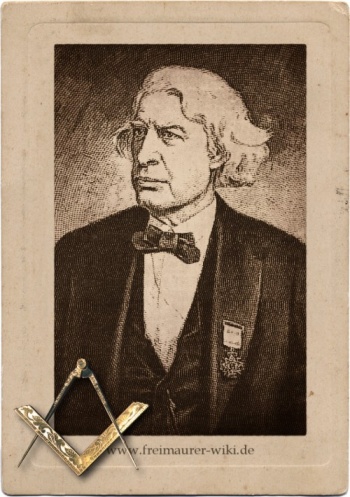En: Mosaic Pavement
Mosaic Pavement
Source: Albert G. Mackey’s Encyclopedia of Freemasonry
Kindred Sciences on the symbolism behind the mosaic (or checkered) pavement, objects that, Mackey says, are “appropriately interpreted as symbols of the evil and good of human life”.
Mosaic work consists properly of many little stones of different colors united together in patterns to imitate a painting. It was much practiced among the Romans who called it musivum opus whence the Italians get their musaico the French their mosaique and we our mosaic. The idea that the work is derived from the fact that Moses used a pavement of colored stones in the tabernacle has been long since exploded by etymologists. The Masonic tradition is that the floor of the Temple of Solomon was decorated with a Mosaic pavement of black and white stones. There is no historical evidence to substantiate this statement. Samuel Lee, however, in his diagram of the Temple, represents not only the floors of the building, but of all the outer courts, as covered with such a pavement (Lee’s Orbis miraculum; or, the Temple of Solomon Pourtrayed by Scripture-Light, London, 1659). The Masonic idea was perhaps first suggested by this passage in the Gospel of St. John, xix 13 “when Pilate, therefore, heard that saying, he brought Jesus forth and sat him down in the judgment-seat in a place that is called the Pavement, but in the Hebrew, Gabbatha.” The word here translated Pavement is in the original Lithostroton, the very word used by Pliny to denote a Mosaic pavement. The Greek word, as well as its equivalent, is used to denote a pavement formed of ornamental stones various colors precisely what is by a Mosaic pavement.
There was, therefore, a part of Temple which was decorated with a Mosaic pavement. The Talmud informs us that there was such a pavement in the conclave where the Grand Sanhedrin held its sessions.
By a little torsion of historical accuracy, the Masons have asserted that the ground-floor of the Temple was a Mosaic pavement and hence, as the Lodge is a representation of the Temple, that the floor of the Lodge should also be of the same pattern.
The Mosaic pavement is an old symbol of the Order. It is met within the earliest rituals of the last century. It is classed among the ornaments of the Lodge in combination with the indented tessel and the blazing star. Its parti-colored (showing different colors or tints) stones of black and have been readily and appropriately interpreted as symbols of the evil and good of human life.

